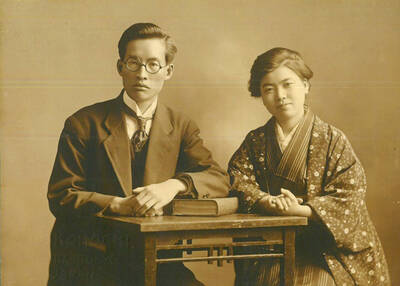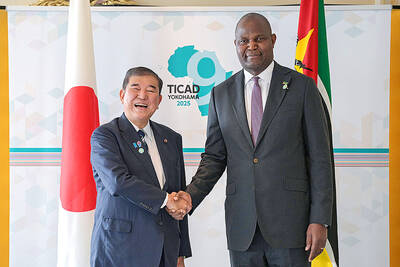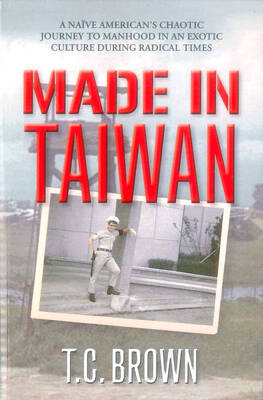"I've had 5,500cc of fat aspirated from my hips and belly, and now I feel very content!" said Helen Lee of the liposuction surgery she underwent one year ago.
"Of course I was scared. I could feel a needle sweeping around my body. And I could hear the sound of the machine. And the doctor showed me the fat aspirated out of me ..."
Dr Tsai Ren-yu (
"The traditional method involves a general anesthesia to the patient and heavy blood loss," he said. Apart from the risk of general anesthesia, the older method carried the risk of fat embolism, or peritonitis.Using the tumescent method, the surgeon injects a solution of Xylocaine, a local anesthesia, and large amounts of saline solution to make the skin tumescent. In this way, the fat is extracted with far less blood loss.
The minor problem is that after the operation, the saline solution oozes from the wounds. "I could feel water leaking from my lap during the first two days after operation," Lee said.
Tsai said liposuction is suited to reduce fat in specific areas of the body, and is not intended as a weight loss method. In fact, he said, overweight people are not recommended for the operation.
Among his 200 patients so far for liposuction, Tsai said the majority are women in their 30s and some in their 40s, many of whom are wealthy and want to fit into a cheongsam dress for social occasions.
"The effect of liposuction is better among the young, because the skin contraction is better," Tsai said.
Tumescent liposuction performed by a dermatologist costs between NT$40,000 and NT$70,000, while the procedure using the traditional method performed by a plastic surgeon costs between NT$50,000 and NT$100,000.

Aug. 25 to Aug. 31 Although Mr. Lin (林) had been married to his Japanese wife for a decade, their union was never legally recognized — and even their daughter was officially deemed illegitimate. During the first half of Japanese rule in Taiwan, only marriages between Japanese men and Taiwanese women were valid, unless the Taiwanese husband formally joined a Japanese household. In 1920, Lin took his frustrations directly to the Ministry of Home Affairs: “Since Japan took possession of Taiwan, we have obeyed the government’s directives and committed ourselves to breaking old Qing-era customs. Yet ... our marriages remain unrecognized,

During the Metal Ages, prior to the arrival of the Dutch and Chinese, a great shift took place in indigenous material culture. Glass and agate beads, introduced after 400BC, completely replaced Taiwanese nephrite (jade) as the ornamental materials of choice, anthropologist Liu Jiun-Yu (劉俊昱) of the University of Washington wrote in a 2023 article. He added of the island’s modern indigenous peoples: “They are the descendants of prehistoric Formosans but have no nephrite-using cultures.” Moderns squint at that dynamic era of trade and cultural change through the mutually supporting lenses of later settler-colonialism and imperial power, which treated the indigenous as

An attempt to promote friendship between Japan and countries in Africa has transformed into a xenophobic row about migration after inaccurate media reports suggested the scheme would lead to a “flood of immigrants.” The controversy erupted after the Japan International Cooperation Agency, or JICA, said this month it had designated four Japanese cities as “Africa hometowns” for partner countries in Africa: Mozambique, Nigeria, Ghana and Tanzania. The program, announced at the end of an international conference on African development in Yokohama, will involve personnel exchanges and events to foster closer ties between the four regional Japanese cities — Imabari, Kisarazu, Sanjo and

By 1971, heroin and opium use among US troops fighting in Vietnam had reached epidemic proportions, with 42 percent of American servicemen saying they’d tried opioids at least once and around 20 percent claiming some level of addiction, according to the US Department of Defense. Though heroin use by US troops has been little discussed in the context of Taiwan, these and other drugs — produced in part by rogue Chinese Nationalist Party (KMT) armies then in Thailand and Myanmar — also spread to US military bases on the island, where soldiers were often stoned or high. American military policeman